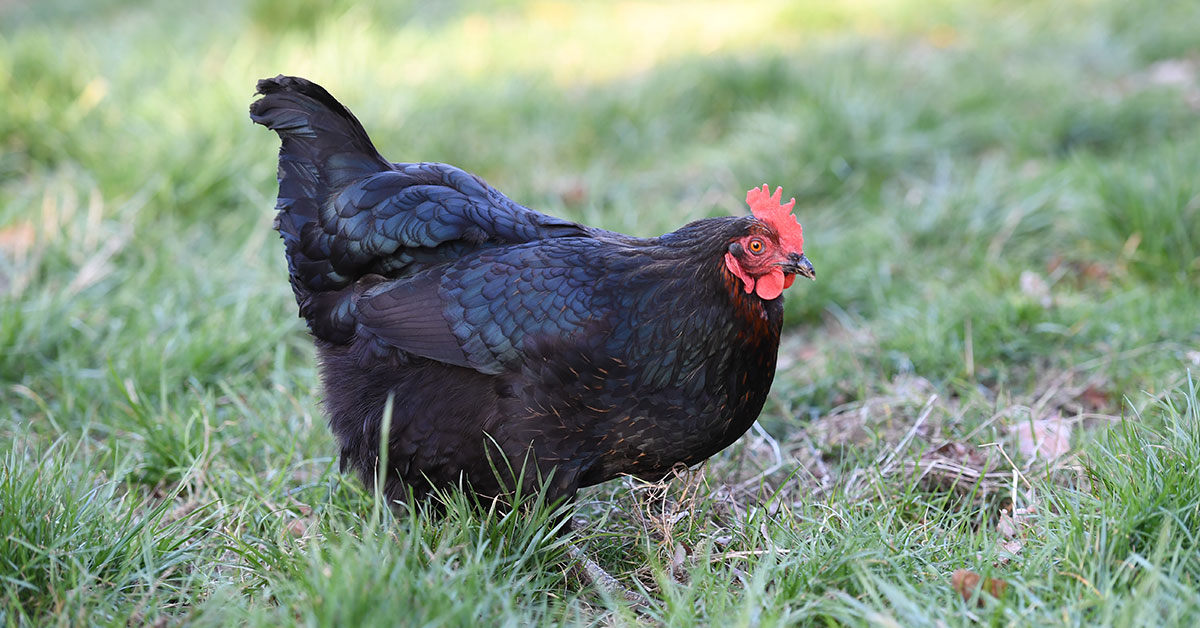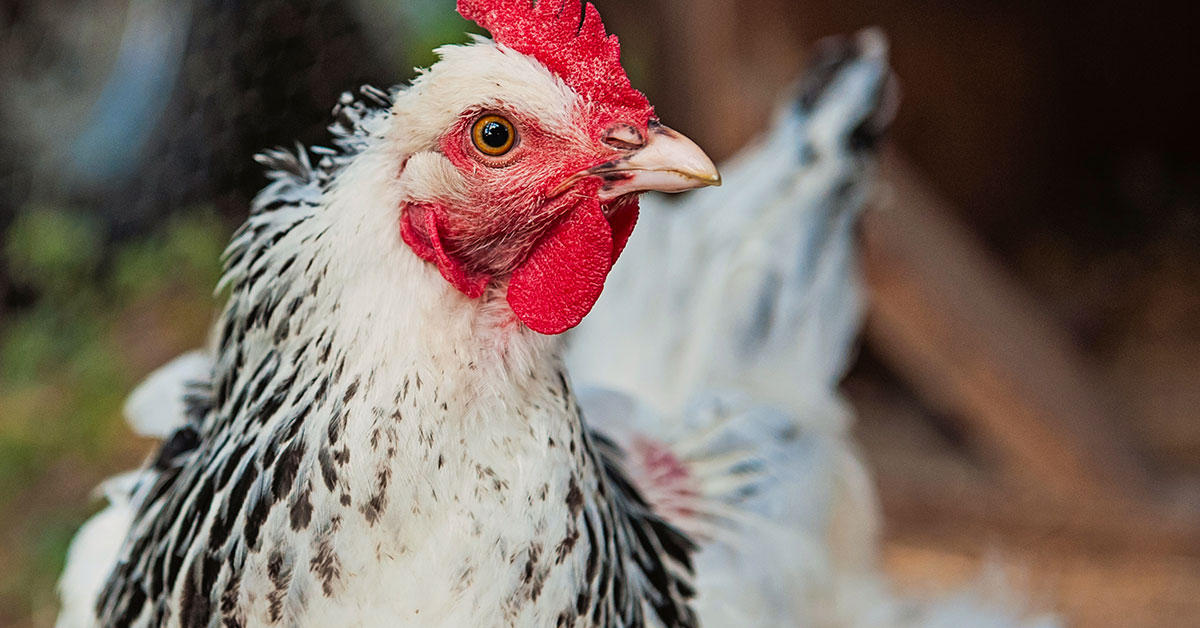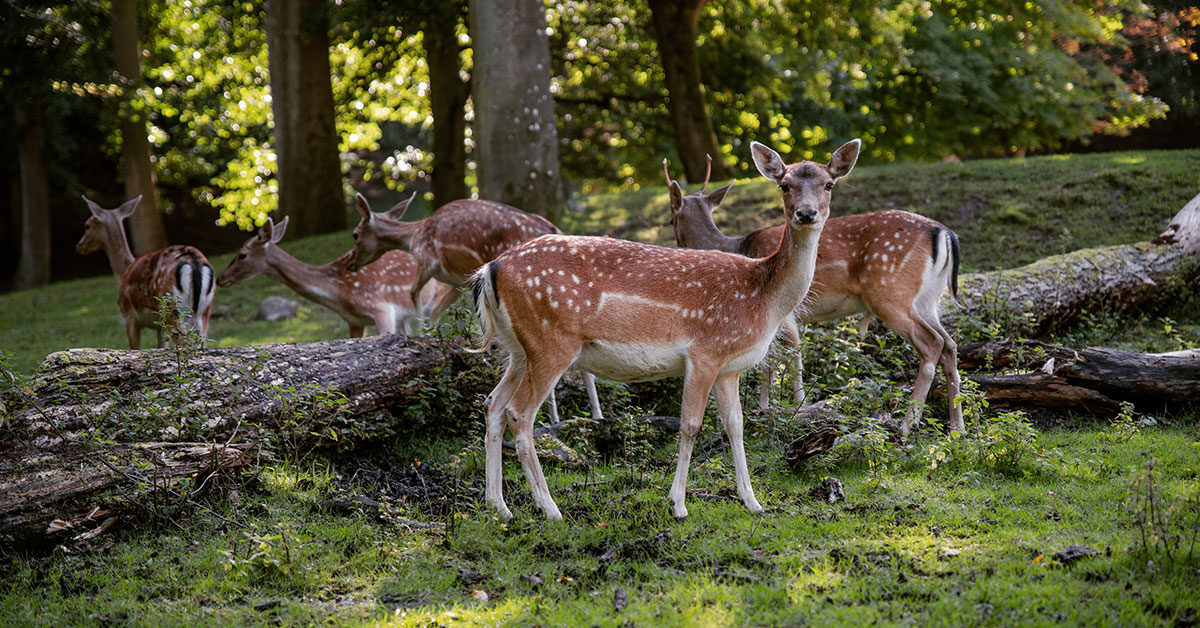Keeping your own flock of chickens is a real treat for a number of reasons. They provide fresh eggs, and hours of entertainment, and their manure can be composted and used in your garden. But not every type of chicken is the same. Some are larger, some are smaller. Some are docile and others can be a little bit more aloof or even aggressive. One of my favorite types of chickens in the Welsummer chicken. I’ve kept Welsummer chickens for years now, and any time I’m looking to bring more chickens into my flock, I always look for a Welsummer or two.
In this article, we’ll do a deep dive on the Welsummer chicken and determine whether or not it’s the right chicken for your backyard flock.
All about the Welsummer chicken
Welsummers are one of my favorite types of chickens due to their excellent foraging abilities and docile nature. They have been jokingly dubbed the “chicken for the zombie apocalypse” because they’re so keen on foraging and finding their own food, which reduces your feed costs. Before getting yourself some Welsummer chicks, it’s best to know a bit about them.
- Appearance: Fiery, iridescent red and brown feathers.
- Origin: Netherlands
- Temperament: Friendly, intelligent, calm
- Rooster behavior: Calm, but not tame
- Noise: Roosters crow frequently. Hens are quiet.
- Purpose: Dual purpose, meat and eggs
- Eggs per year: 160
- Egg color: Dark brown
- Size: Medium, compact
- Hen weight: 6 pounds
- Rooster weight: 7 pounds
- Broody: No
- Lifespan: 5-8 years
- APA Recognized: Yes, 1995
Welsummers are gorgeous chickens, with red and brown feathers that resemble a fiery paisley pattern. These chickens originated in the Netherlands and were recognized by the APA as a breed in 1995. They are friendly, calm, and intelligent chickens. The Welsummer rooster is not likely to be violent but it is not a tame bird either. Welsummer chickens are considered dual purpose, good for both meat and eggs, but they are a bit smaller in stature. Not all chicken keepers will raise them for their meat.
Welsummers are good egg layers, laying approximately 160 dark brown eggs per year. If you are interested in naturally incubating chicken eggs, Welsummers are a good breed to choose. They are good nesters and will happily sit on eggs and raise young. They live an average of 5-8 years.
History of the Welsummer chicken
The Welsummer chicken is a relatively new breed. It was recognized by the APA in 1995 and was first bred into existence in the early 1920s. It was first bred in the small Dutch village of Welsum from a mix of existing breeds. Rhode Island Reds, Barnevelders, Partridge Leghorns, Cochins, and Wyandottes were all used as breeding stock to develop what would eventually come to be called the Welsummer chicken.
The Welsummer rooster is the chicken famously depicted as The Kellogg’s Corn Flakes mascot, first debuted on cereal boxes in 1957.
Temperament
Welsummers are easy-going chickens not prone to moodiness or violence. It’s a good breed to pick if you have younger children. They are patient, but not terribly tame. Welsummer chickens probably won’t be a lap chicken for you, but their antics will provide your family tons of entertainment. Roosters have a similar temperament and are not prone to aggression.
Purpose
Welsummer chickens are considered by some to be dual-purpose birds, being good for both meat and eggs, but are not kept for meat by many breeders. They are compact birds, medium-sized in stature but weighing 6-7 pounds. In a single year, your Welsummer hen will produce approximately 160 eggs.
Appearance
Welsummers are compact, medium-sized chickens with red and brown feathers that take on a fiery paisley sort of pattern. Roosters can have iridescent green feathers on their tail or chest. They have large, red combs and yellow talons.
Coop and run
Chickens tend to pick up bad behaviors when their coop and run aren’t up to their standards, so making sure you have the appropriate cook and run for your Welsummer chickens is vitally important.
Welsummers are self-sufficient birds that can forage a substantial amount of their diet, saving on feed. The more space you can provide them, the more you’ll save and the happier they’ll be. Welsummer chickens should be provided 10 or more square feet of free-range area per bird.
Chicken runs and coops should be kept properly cleaned out and provided with fresh straw regularly. At least one nest box per laying hen is preferred, although they can tolerate “buddying up” and laying eggs in the same nest box. These chickens are known to wander some and will occasionally find creative places to lay their eggs.
Common problems with Welsummer chickens
Welsummer chickens are tough, hardy chickens not prone to very many problems that the breed as a whole isn’t prone to. The Welsummer rooster has a large comb and wattle, making them susceptible to frostbite in very cold conditions. If it looks like temperatures are about to drop below zero, you may want to keep your rooster confined to the coop until warmer weather approaches.
Breeding Welsummer chickens
Breeding your Welsummer chickens doesn’t differ significantly from breeding other types of heritage chickens. Providing your Welsummer hens access to a rooster and allowing nature to take its course will yield healthy, strong chicks. A ratio of 10 hens for every rooster will typically yield good fertility rates. You can allow a broody hen to sit on her eggs, but Welsummers are not known to be broody. It’s better to hatch them in an incubator. A quick guide to hatching:
- Incubation time: 21 days
- Incubator temperature: 37.5°C (99.5°F)
- Incubator humidity: 40-50%
- Egg turning: 4 times a day
- Candling eggs: Day 7
- Lockdown Date: Day 17
- Lockdown temperature: 37.2°C (99°F)
- Lockdown humidity: 65%
For more information, check out our comprehensive guide on incubating chicken eggs.
What to feed Welsummer Chickens
Up until about 16 to 20 weeks, your Welsummer chicks should be fed a commercial chick starter feed with 18% protein. This added protein will help your young chicks grow and develop into healthy birds. At 20 weeks, they can be switched to a 16% protein layer feed to support healthy feathers and good egg production. Chickens enjoy being put out to pasture where they can eat grass, bugs, and other plants. They will also gladly eat some fruits, vegetables, grains, and leafy greens.
For more information, check out our comprehensive guide on what foods chickens can and cannot eat.













